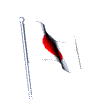

|
When one thinks of travelling in Indonesia,
Bali is the island that comes to mind, but Bali is only one of 17,000
islands that make up Indonesia.
Several small islands are still uninhabited. Indonesia
is the largest archipelago (that means group of islands) in the world.
The islands spread 3,200 miles from east to west across the
Equator--that's about the size of the United States from coast to coast.
Indonesia
borders Malaysia and Papua New Guinea by land and Singapore, Thailand,
Vietnam, the Philippines and Australia by sea.
Since Indonesia
lies across the equator, it has a tropical climate that is slightly cooler
in the higher altitude regions. Rain falls from November to April, and the
sun shines from May to October.
|
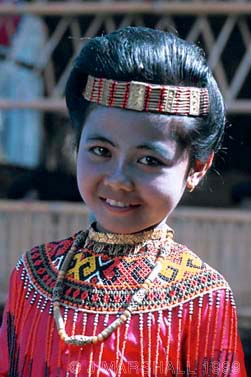 |
85 percent of Indonesians follow the Islamic faith.
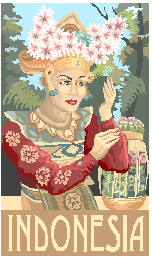
A typical meal in Indonesia will almost always include rice. Coconut is found everywhere and is used for its cooking oil and milk.
Historical monuments abound throughout the islands. Buddhist and Hindu temples, ancient fortresses, museums, mosques, churches and graves of past royalty, national heroes and World War II victims.
Coral reefs combined with sunken ships and wrecks from World War II make SCUBA diving exciting in Indonesia.
![]()
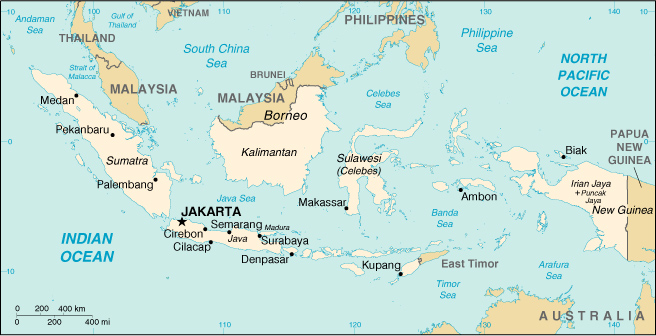
|
|
| Ethnic Groups: Javanese 45%, Sundanese 14%, Madurese 7.5%, coastal Malays 7.5%, other 26% | |
| Money: Indonesian rupiah. | |
| Natural resources: petroleum, tin, natural gas, nickel, timber, bauxite, copper, fertile soils, coal, gold, silver. | |
| Agriculture and products: rice, cassava (tapioca), peanuts, rubber, cocoa, coffee, palm oil, copra; poultry, beef, pork, eggs. | |
| Exports: oil and gas, plywood, textiles, rubber. | |
| Imports: machinery and equipment; chemicals, fuels, foodstuffs. | |
| Terrain: mostly coastal lowlands; larger islands have interior mountains. | |
| Climate: tropical; hot, humid; more moderate in highlands. | |
| Elevation extremes: lowest point: Indian Ocean 0 m, highest point: Puncak Jaya 5,030 m. |
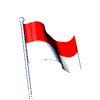
![]()
|
|
The main food of the Japanese people is rice. It is often simply boiled and eaten with pickled vegetables, such as pickled cabbage, cucumbers, eggplant, or radishes. The Japanese people serve rice at almost every meal. Other traditional dishes include sukiyaki (beef cooked with vegetables) and tempura (fish and vegetables fried in batter). Favourite Japanese snacks include various kinds of noodles in broth and yakitori, charcoal-grilled pieces of poultry on a skewer. |
![]()
| Japan is famous for its electronic exports and are leaders in computer technology. Japan is one of the world's leading trading nations. It's main exports, in terms of value, are passenger cars, iron and steel, and electronic equipment. Other leading exports are electrical and non-electrical machinery, motorcycles and trucks, plastics, precision instruments, ships and synthetic fibre fabrics. | 
|
| Japan has a rich literary heritage. Much of the country's literature deals with the fleeting quality of human life and the never-ending flow of time. The Tale of Genji, a long novel written during the early 1000's, is generally considered the greatest work of Japanese fiction. It is thought to be the first novel ever written. It is about the romantic adventures of Prince Genji, the "Shining Prince." | 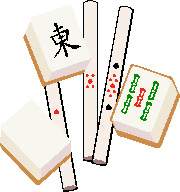 |
The Japanese flag is white with a large red disk (representing the sun without rays) in the centre.

Some common Japanese phrases:
| Japanese | English |
| O genki desu ka?: | How are you? |
| Hai, genki desu. | Fine, thank you. |
| Konnichi wa: | Good Morning |
| Komban wa: | Good Evening |
| Oyasumi nasai | Good Night |
|
Domo Arigato: |
Thankyou |
| Sumimasen: | Excuse me |
| Gomen nasai | Sorry |
| Sayonara:; | Good Bye |
| Hai: | Yes |
| Iie: | No |
| Ja ne! | See ya! |
| O-negai shimasu | Please |
| Dou itashimashite | You're Welcome |
| Itadakimasu! | Bon Appetit! |
![]()
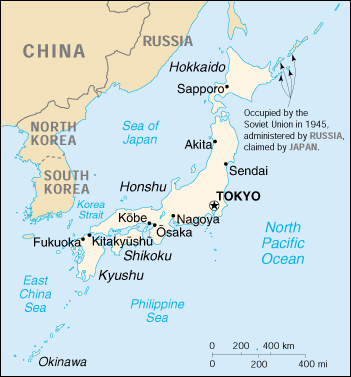
![]()
|
 |
| Ethnic Groups: Japanese 99.4%, Korean 0.6% (1999). | |
| Money: Japanese Yen. | |
| Natural resources: negligible mineral resources, fish. | |
| Agriculture and products: rice, sugar beets, vegetables, fruit; pork, poultry, dairy products, eggs; fish. | |
| Exports:motor vehicles, semiconductors, office machinery, chemicals. | |
| Imports: fuels, foodstuffs, chemicals, textiles, office machinery. | |
| Terrain: mostly rugged and mountainous. | |
| Climate: varies from tropical in south to cool temperate in north. | |
| Elevation extremes: lowest point: Hachiro-gata 4 m, highest point: Fujiyama 3,776 m. |
